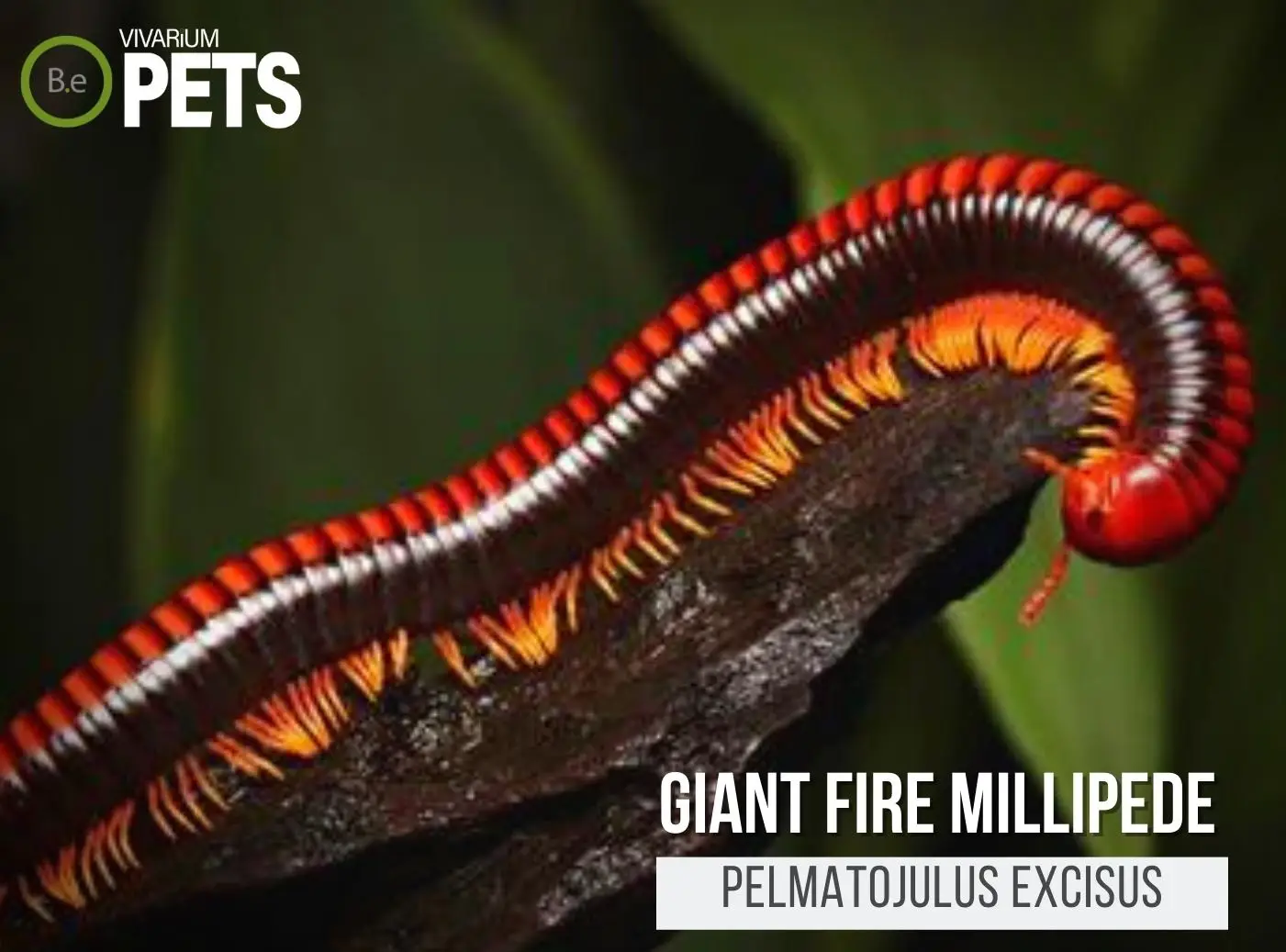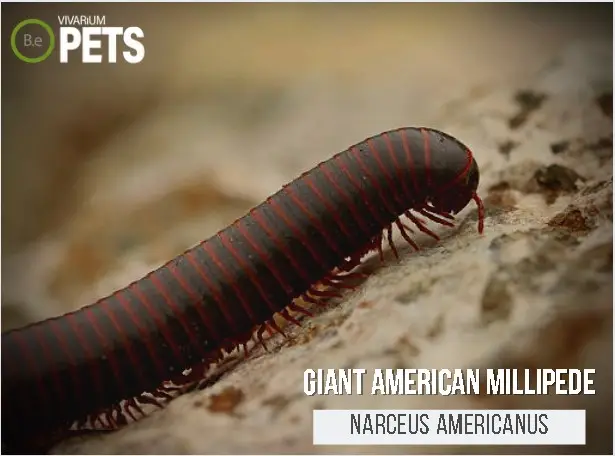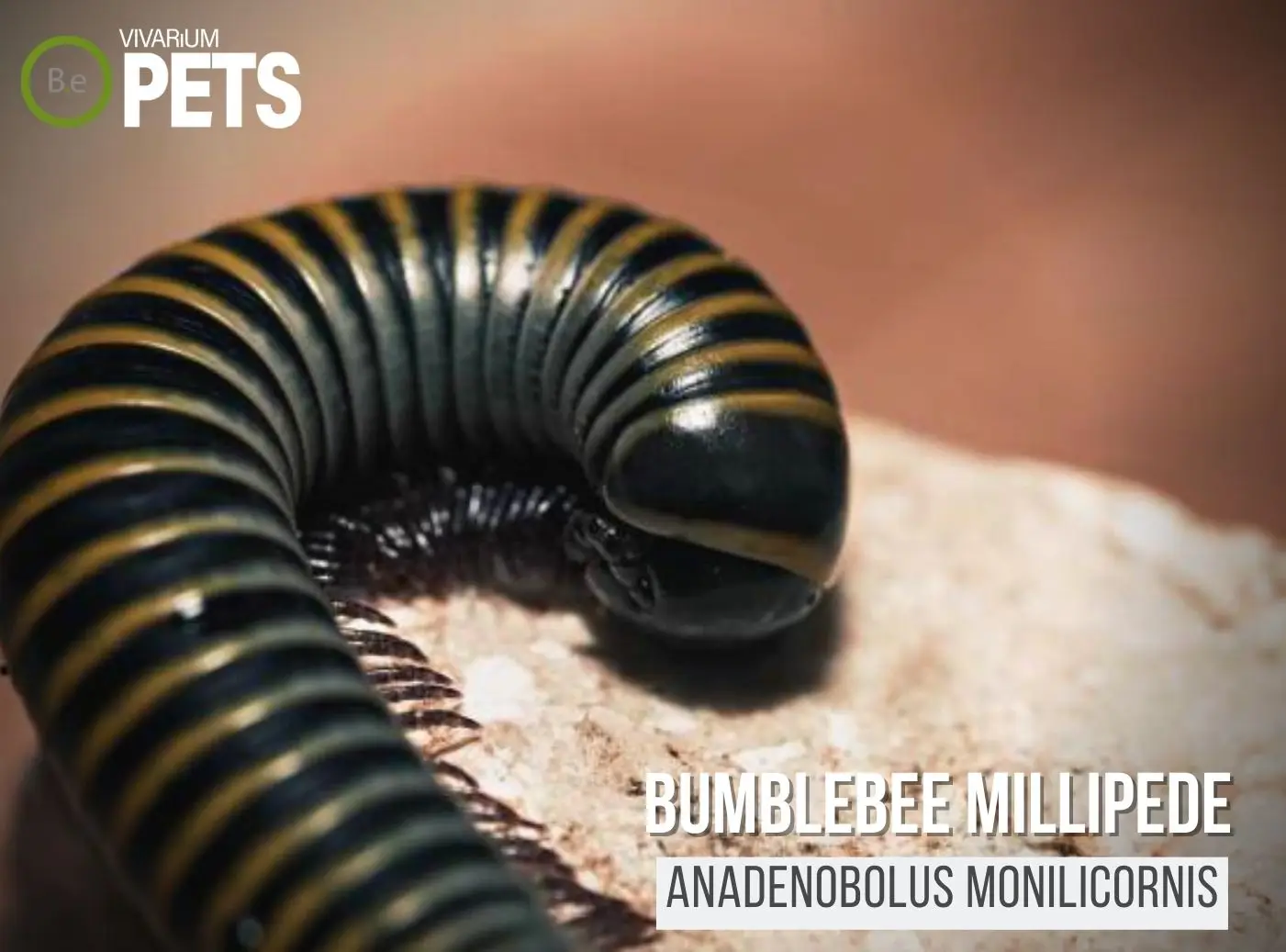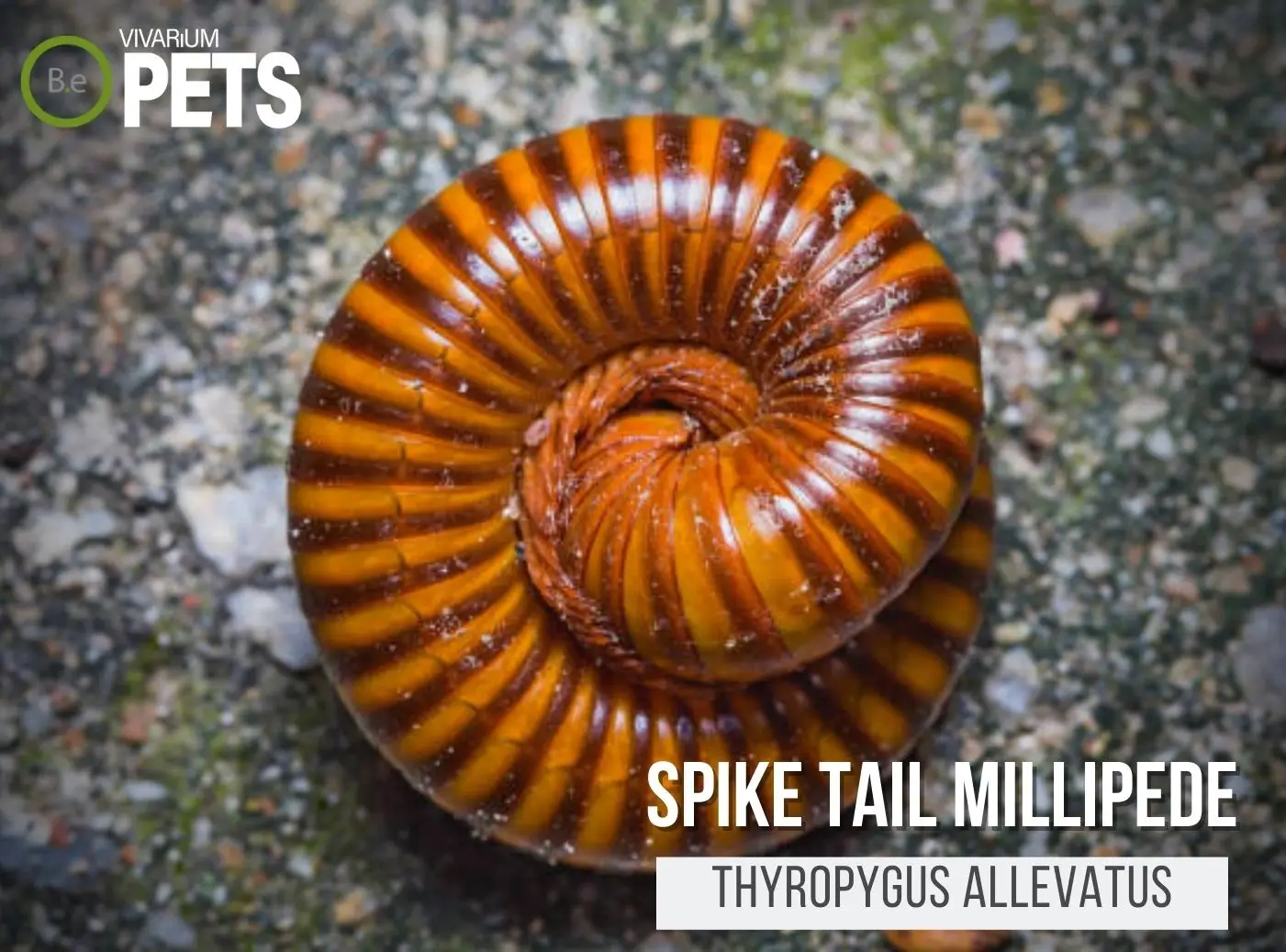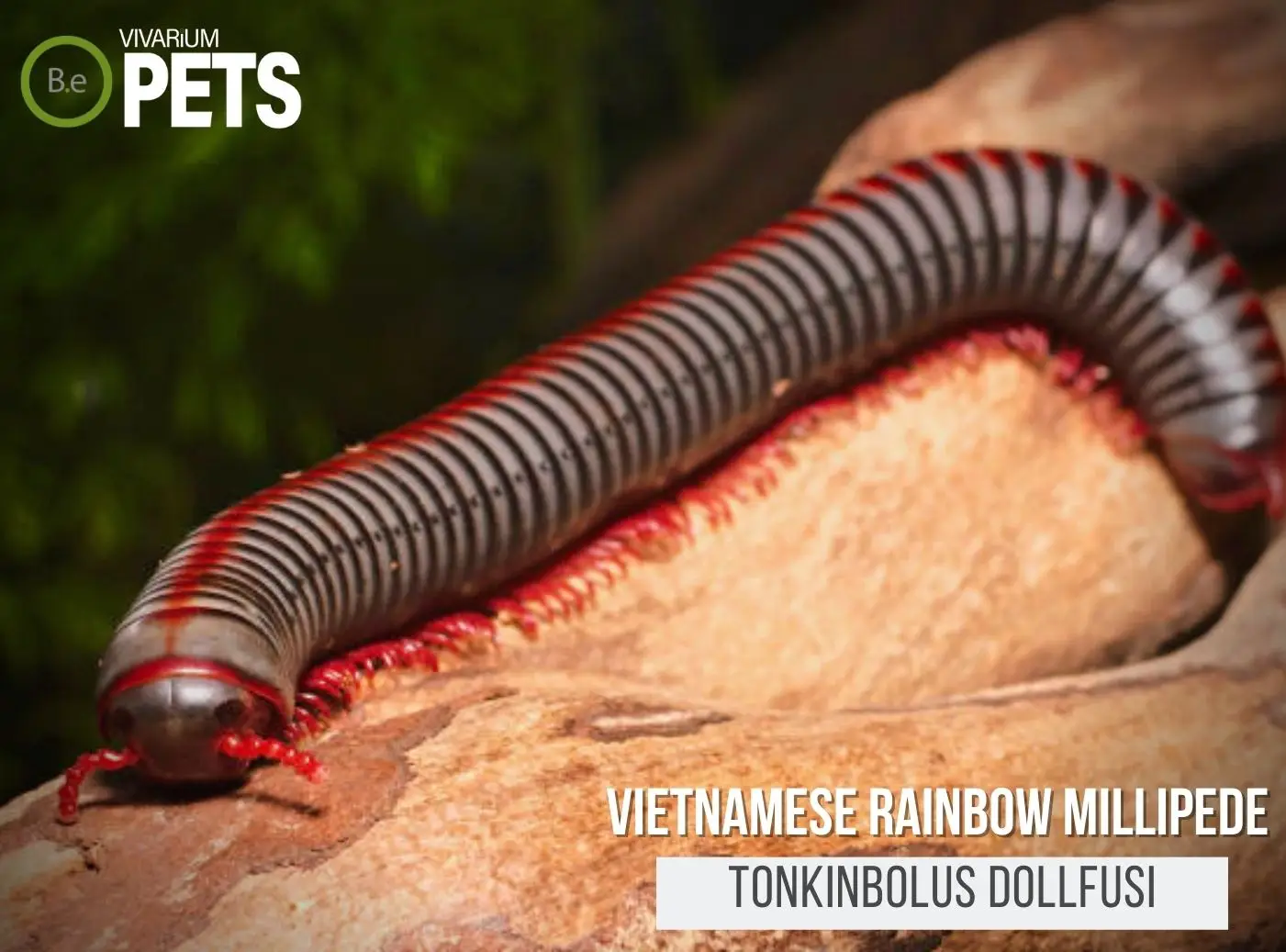If you’re looking to add a unique and interesting species to your terrarium, giant millipedes could be a perfect choice.
Not only do they look fascinating, but they also help maintain balance in their environment, eating decaying matter and helping to aerate and break down soil.
Giant millipedes come in a variety of colors as well as sizes and can add a lot of personality to your enclosure.
In this article, we’ll explore various types of giant pet millipedes for terrariums, as well as the best ways to care for and maintain them.
Table Of Contents:
ToggleWhat Are Giant Millipedes?
A giant millipede is any species of millipede that reaches a size larger than an average millipede.
They can range from 3 to 13 inches in length, and have up to 400 legs.
These invertebrates have an exoskeleton, which means they have an external skeleton that is made of chitin.
They come in a range of vibrant colors and have a segmented body with a few pairs of legs per segment.
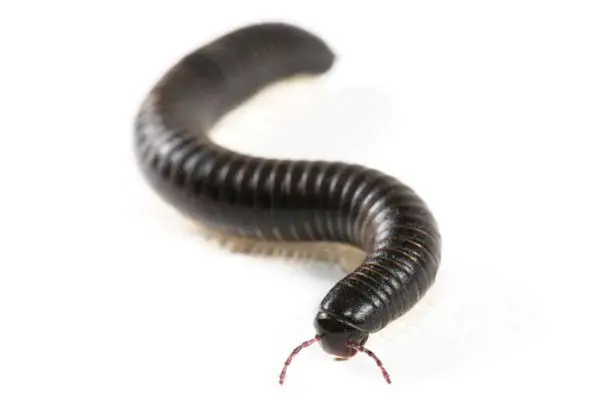

Benefits Of Giant Millipedes
Giant millipedes are important members of their environment, helping to maintain balance by eating decaying matter and aerating and breaking down soil.
They can also help control the population of insects, as they are often predators of small insects.
In addition to the benefits they offer to the environment, they can also be a great addition to your terrarium.
These oversized arthropods are also known to be great scavengers and can help clean up any messes in your tank.
Giant millipedes are low–maintenance and easy to care for, making them a great choice for terrarium owners.
Create the perfect home for your millipedes with our Customizable Millipede Terrarium Kits, designed to meet all their habitat needs.
Best Types Of Giant Millipedes
There are many types of giant millipedes available for keeping, each with its unique characteristics.
Some of the most popular species of large millipedes are suitable for a life of solitude in their setups while others do great in small communities.
Each species has its own needs and requirements, so research is key when it comes to choosing the right type of mega-millipede for your enclosure.
Giant African Millipede (Archispirostreptus gigas)
The Giant African Millipede, aka Archispirostreptus gigas, is not only the largest millipede on this list but one of the largest in the world.
They are native to the tropical forests of western and central Africa and can grow up to 13 inches in length and 1.2 inches in width.
They have segmented bodies that vary from blackish brown to reddish brown.
Unlike other giant millipedes, Giant African Millipedes are known to be long-lived, with a maximum lifespan of up to 10 years in captivity.
They are nocturnal, so they enjoy hiding under leaf litter during the day and coming out to feed at night.
If you’re looking for more specifics on this millipede, here’s a full care guide on the Giant African Millipede (Archispirostreptus gigas).
Cameroon Giant Black Millipede (Spiropoeus fischeri)
Cameroon Giant Black Millipede, or Spiropoeus fischeri, is a giant millipede that is native to tropical rainforests of West and Central Africa.
It can grow up to almost 10 inches in length and is an ideal species for larger terrariums.
This species is black and covered in a heavy exoskeleton that serves as a defense mechanism.
Some of the unique features of the Cameroon Giant Black Millipede are its bright red coloring along its legs and faint yellow on its back which is not commonly found in other giant African millipedes.
If you’re looking for more specifics on this millipede, here’s a full care guide on Cameroon Giant Black Millipede (Spiropoeus fischeri).
Chocolate Millipede (Ophistreptus guineensis)
The Ophistreptus guineensis, commonly known as the Chocolate Millipede, is a giant millipede native to tropical Africa.
It is an ideal choice for big terrariums, as it can reach up to 9 inches in length.
Its exoskeleton is a unique solid brown color, with a matching head and legs giving it a distinctive chocolate-like color.
It can curl into a tight ball if it feels threatened, making it easy to handle and transport.
Unique to the Chocolate Millipede, its antennae are shorter than those of other Giant Millipedes, allowing it to burrow more easily in the soil.
On top of this, they can live up to ten years, making them a long-term terrarium feature.
If you’re looking for more specifics on this millipede, here’s a full care guide on the Chocolate Millipede (Ophistreptus guineensis).
Giant Fire Millipede (Pelmatojulus excisus)
The Giant Fire Millipede is a more vibrant colored invertebrate, growing up to almost 7 inches in length when fully matured.
These millipedes have an orange-and-black or dull yellow-and-black coloration throughout their bodies.
They come from the rainforests of Ghana, making them a great addition to any African-themed terrarium.
Uniquely, Giant Fire Millipedes use defensive secretions made of hydrochloric acid – making them one of the only giant millipedes to employ this type of defense.
If you’re looking for more specifics on this millipede, here’s a full care guide on the Giant Fire Millipede (Pelmatojulus excisus).
Desert Millipede (Orthoporus ornatus)
The Desert Millipede, also known as Orthoporus ornatus, is a colorful giant Millipede native to the deserts of the southwestern United States and northern Mexico.
This unique millipede can reach lengths of up to 9 inches, making it one of the largest millipedes native to the US.
One interesting characteristic that sets Desert Millipedes apart from other giant Millipedes is their diurnal behavior.
While most other giant Millipedes are nocturnal, Desert Millipedes are active during the day!
Desert Millipedes are an excellent species for more arid terrariums, as they have adapted to less humid conditions than most other millipedes.
If you’re looking for more specifics on this millipede, here’s a full care guide on the Desert Millipede (Orthoporus ornatus).
American Giant Millipede (Narceus americanus)
The American Giant Millipede, or Narceus americanus, is a great millipede for medium to large-sized terrariums.
It typically reaches about 5 inches long and is black with brown or red bands.
This millipede is native to the eastern United States, from Florida to New England, and is among the largest North American millipedes.
Furthermore, American Giant Millipedes are relatively easy to care for, and they can often live up to 10 years in the right environment.
If you’re looking for more specifics on this millipede, here’s a full care guide on the American Giant Millipede (Narceus americanus).
Smokey Oak Millipede (Narceus gordanus)
The Smokey Oak Millipede (Narceus gordanus) is a giant millipede that makes a great addition to bigger vivariums.
It can grow up to 4.5 inches long, has a light brown body with green and yellow stripes, and is native to the southeastern United States.
What sets this millipede apart from other giant millipedes is that, unlike the other species of millipedes, it is known to be fuller in size making them ideal as a feeder for larger animals.
This millipede is also nocturnal, so it will spend its days hiding from those larger predators.
If you’re looking for more specifics on this millipede, here’s a full care guide on the Smokey Oak Millipede (Narceus gordanus).
Bumblebee Millipede (Anadenobolus monilicornis)
The Bumblebee Millipede (Anadenobolus monilicornis) is a large and vivid millipede species with a yellow and black striped body, native to the Eastern and Midwestern United States.
Not only is it a striking conversational piece due to its vibrant yellow hues – reaching up to 3.9 inches in length – it is commonly admired for its resemblance to bees.
For that reason, it makes a great terrarium pet, able to thrive in humid environments, and harmless to handle.
As one of the most fascinating giant millipedes to have as pets, the Bumblebee Millipede is often recommended as a beginner’s exotic pet due to being easy to care for, making it an ideal choice for a terrarium.
If you’re looking for more specifics on this millipede, here’s a full care guide on the Bumblebee Millipede (Anadenobolus monilicornis).
Florida Ivory Millipede (Chicobolus spinigerus)
The Ivory Millipede, Chicobolus spinigerus, is native to Florida, the southeastern United States, and the Caribbean.
It is a unique species of giant millipede, reaching lengths up to 3.5 inches when mature.
It features an ivory color with distinctive stripes along its body and usually has two pairs of legs per segment.
These millipedes are very popular in terrariums due to their docile nature and beautiful coloring.
Unlike other giant millipedes, the Florida Ivory Millipede does not require a photoperiod, meaning it does not particularly need or utilize light cycles to maintain seasonal rhythms, making them an easy species to keep.
If you’re looking for more specifics on this millipede, here’s a full care guide on the Florida Ivory Millipede (Chicobolus spinigerus).
Spike Tail Millipede (Thyropygus allevatus)
The Spike Tail Millipede, or Thyropygus allevatus, is a giant millipede that fits perfectly in extra-large terrariums.
Typically measuring up to a foot long, these millipedes come in a range of colors, including brown and green, and feature a spiky tail.
With origins in Asia, this millipede is gaining popularity as a companion pet due to its docile nature and cleaning habits.
What’s more, unlike other giant millipedes, spike-tail millipedes are generally kept singly, not in pairs, which makes them easier to care for in captivity.
If you’re looking for more specifics on this millipede, here’s a full care guide on the Spike Tail Millipede (Thyropygus allevatus).
Thai Rainbow Millipede (Spirobolus caudulanus)
The Thai Rainbow Millipede (Spirobolus caudulanus) is an attractive giant millipede that is great for terrariums.
It is one of the larger species of giant Asian millipedes, reaching up to 10 inches long.
It has orange and black segments that are outlined in a bluish-white and appear to change color depending on the angle of the light.
This iconic millipede is unique in its large size and striking coloration.
If you’re looking for more specifics on this millipede, here’s a full care guide on the Thai Rainbow Millipede (Spirobolus caudulanus).
Vietnamese Rainbow Millipede (Tonkinbolus dollfusi)
The Vietnamese Rainbow Millipede (Tonkinbolus dollfusi) is an impressive giant millipede that is native to the tropical regions of Vietnam.
It can reach up to almost 4 inches in length and is covered in alternating white and black stripes, giving it its rainbow-like appearance.
This type of millipede is great for terrariums and requires high humidity and warm temperatures.
If you’re looking for more specifics on this millipede, here’s a full care guide on the Vietnamese Rainbow Millipede (Tonkinbolus dollfusi).
Scarlet Red Millipede (Trigoniulus corallinus)
The Scarlet Red Millipede, scientific name Trigoniulus corallinus, is an excellent choice for terrariums as it is one of the most common species of giant millipedes to find in a home.
It can grow up to 3 inches in length and is characterized by its distinct red exoskeleton.
This species of millipede is generally slower moving than other millipedes, so it’s fun to watch it leisurely roam around.
If you’re looking for more specifics on this millipede, here’s a full care guide on the Scarlet Red Millipede (Trigoniulus corallinus).
Giant Millipedes For Sale
When buying giant millipedes, it is vital to purchase them from a reputable supplier.
Make sure that they are in good health and have been kept in proper condition.
It is also important to ensure that the millipedes are not wild-caught, as this can introduce diseases and parasites into your vivarium.
Additionally, it is important to check the size of the millipedes before buying, as some species can grow quite large and require larger setups.
Giant Millipede Care
Caring for giant millipedes in a vivarium is relatively simple.
They need a humid environment with plenty of ventilation and a terrarium substrate of coco fiber and peat moss.
They should be kept in an enclosure that is clean and free of debris at all times.
Proper care and maintenance of your giant millipedes will ensure they remain healthy and safe.
Our Bioactive Millipede Substrate Blend is specially formulated to meet the needs of various millipede species, providing an optimal balance of moisture and nutrients.
Feeding Giant Millipedes
Giant millipedes should be fed a variety of leafy greens and vegetables. Fruits and fungi can also be offered as a treat.
Additionally, I recommend providing a shallow dish of water for them to drink.
It is also important to make sure that their food is fresh and not spoiled, as this can lead to health problems.
When feeding giant millipedes, it is important to avoid overfeeding, as this can lead to obesity and other health issues.
If you’re more of an avid hobbyist like myself, be sure to check out my ultimate DIY millipede food guide. I give a more in-depth explanation of the best foods and my favorite recipe.
Conclusion
Giant millipedes can be an exciting addition to many types of vivariums.
Not only do they have a unique look, but they also help maintain balance and cleanliness in their environment.
With the right care and maintenance, giant millipedes can be an interesting and beneficial species for your tank.
We hope this article has given you insight into the various types of giant millipedes, as well as how to best care for and maintain them.
Create the ideal habitat for your millipedes with our species-specific soil mixes and Insect Enclosure Kits. These products provide everything you need for a successful and thriving millipede colony.
Frequently Asked Questions
Yes, giant millipedes can make good pets if properly cared for. They are relatively easy to care for and have a long lifespan of up to seven years.
The largest millipedes in the United States are the Giant Desert Centipede (Orthoporus ornatus) which can grow to be as much as 9 inches long.
No, giant millipedes are not illegal. However, they are considered exotic pets and may require a permit to own depending on where you live.
No, giant millipedes are not considered endangered.
Various species of birds, reptiles, amphibians, and mammals may feed on giant millipedes. These include lizards, geckos, skinks, toads, frogs, snakes, hedgehogs, possums, opossums, and some birds, such as crows, jays, and owls.
Giant millipedes can live up to 10 years in captivity.
Yes, giant millipedes have a distinctive smell when threatened or disturbed. The smell is often described as a musty, unpleasant odor.
No, giant millipedes are not blind. They have two simple eyes on the head and are able to sense light and dark.






